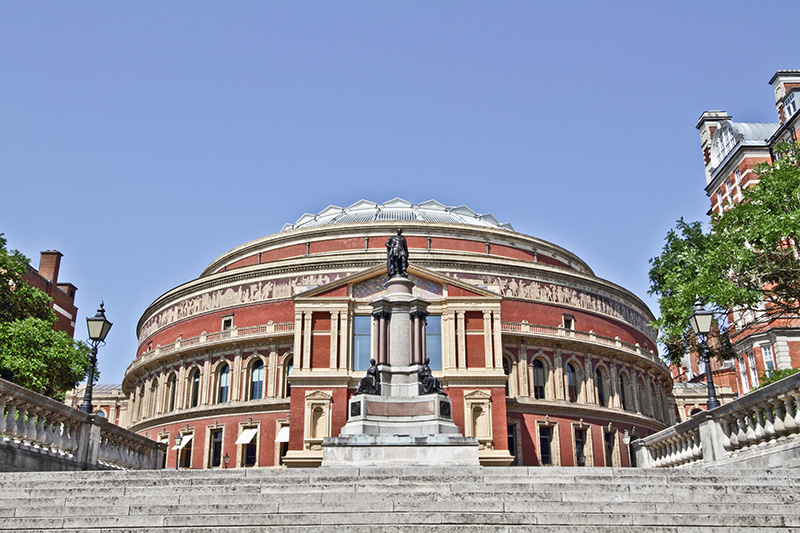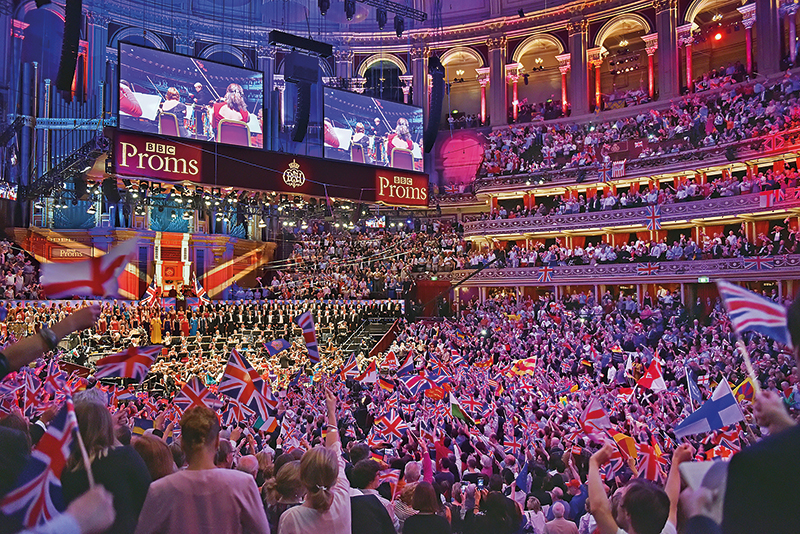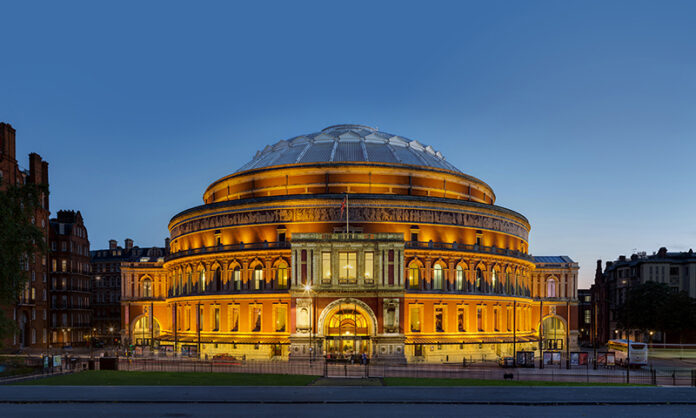Prince Albert’s huge domed red-brick amphitheatre celebrated its 150th anniversary in 2021. We look at the history of London’s most atmospheric concert venue
On 20 May 1867, Queen Victoria, dressed entirely in black, laid the foundation stone of what was to become the Royal Albert Hall. The ceremony took place in a vast marquee packed with 10,000 people, jostling for a glimpse of the Queen, who had rarely been seen in public since her beloved husband’s untimely death a decade earlier.
Reports of the event said the Queen spoke ‘indistinctly, slowly and with great emotional strain’. Using a golden trowel, she planted the stone, together with a glass time-capsule that contained an inscription and a number of gold and silver coins.

Addressing the assembled crowd, the Queen announced that the building was to be known as the Royal Albert Hall of Arts and Sciences, in memory of her husband: a change from the building’s planned name, the Central Hall of Arts and Sciences.
At the official opening of the building four years later, the Queen was so overcome with emotion that she could not speak; her son, the Prince of Wales, had to provide the welcome speech in her place.
The Royal Albert Hall was an almost unbearably poignant reminder of the Queen’s beloved ‘Bertie’. The building represented the fulfilment of Prince Albert’s vision: inspired by the Great Exhibition of 1851, he had planned to create a permanent series of structures that would promote an understanding and appreciation of the Arts and Sciences, an idea that was to be realised in an area of South Kensington known as Albertopolis. Sadly, Price Albert died of typhoid before seeing his dream of a cultural quarter become reality.
Balls, concerts and the Proms
The Hall has hosted more than 30,000 events during its history. Echo notwithstanding, few buildings were so well equipped for spectacle on a grand scale, and the Hall was the ideal venue for lavish, visually spectacular balls.

Today, it is best known for its classical music concerts. Walk by the Royal Albert Hall on a summer’s evening and you may well be caught up in a whirl of excited concertgoers on their way to a Prom. As much a part of the English summer as strawberries and cream, the annual Proms are an eight-week series of classical concerts that are watched by millions around the globe.
The term ‘Prom’, short for ‘promenade concert’, arose from the practice of strolling around while the orchestra was playing. Die-hard ‘Prommers’ still prefer to stand in the arena, where they are free to indulge in the ‘Prommers’ stamp’ – the noisier equivalent of a standing ovation.
Eight weeks of concerts culminate in the raucous party that is the Last Night, when a misty-eyed, flag-waving audience attempts to raise the roof of the Hall with rousing patriotic singalongs.
Welcoming all comers, and with a hugely varied programme that mixes long-forgotten works with a more familiar repertoire, the Proms are true to Prince Albert’s original vision of an artistic space open to all.
As for the foundation stone that was laid by the Queen back in 1867, if you’re ever sitting in Stalls K, Row 11, Seat 87, have a look under your seat. The block of red Aberdeen granite concealed there is a reminder of how Prince Albert’s big idea evolved into a great British institution.






 © 2024
© 2024